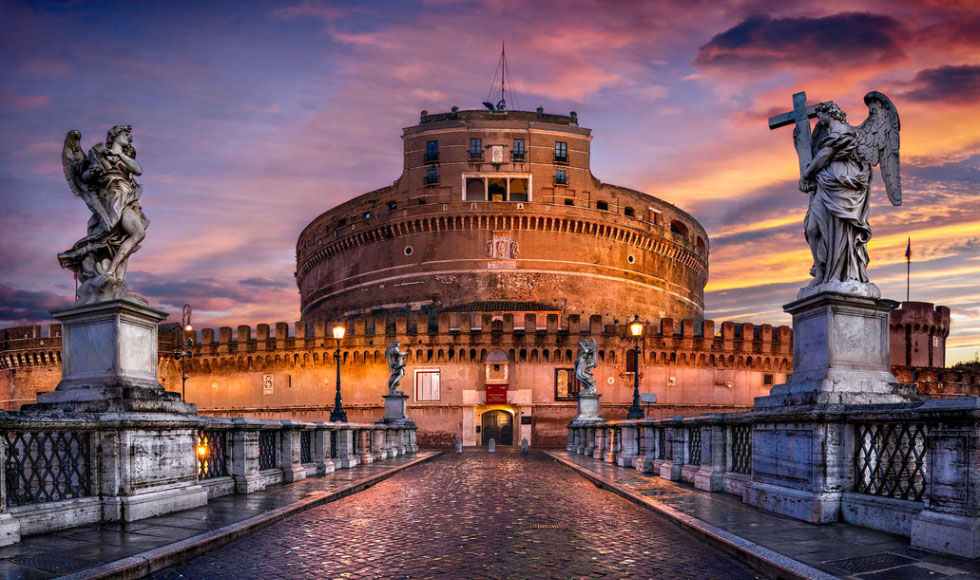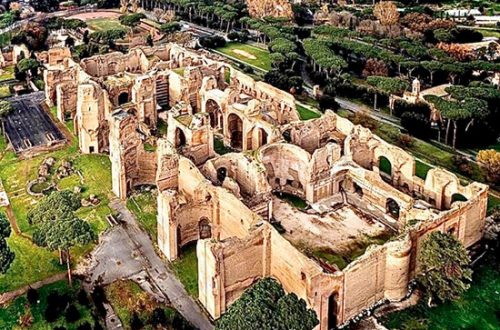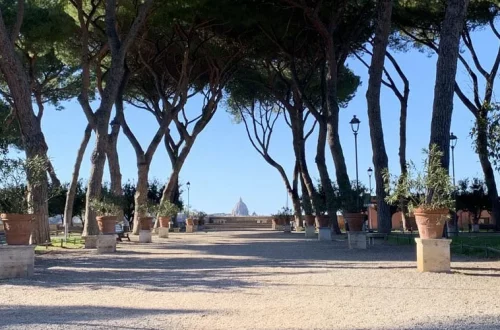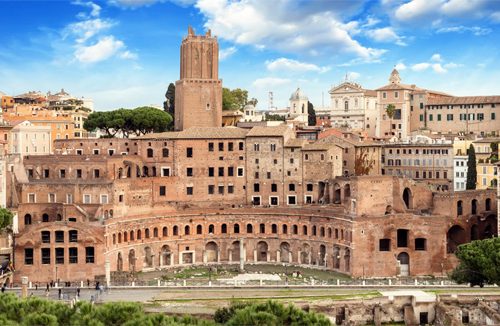
Castel Sant’Angelo
Castel Sant’Angelo, also known as the Mausoleum of Hadrian, is a historic fortress located in Rome, Italy. Here are some key points about Castel Sant’Angelo:
- History: The structure was initially commissioned by the Roman Emperor Hadrian as a mausoleum for himself and his family. It was completed in 139 AD. Over the centuries, it served various purposes, including as a fortress and a residence for popes.
- Architectural Features: Castel Sant’Angelo is a cylindrical building with a diameter of about 64 meters (210 feet). The mausoleum was topped with a golden quadriga (a chariot drawn by four horses) statue of Hadrian. The building is faced with travertine marble.
- Connection to the Vatican: In the Middle Ages, a fortified corridor called the Passetto di Borgo was constructed to connect Castel Sant’Angelo to Vatican City. This served as an escape route for popes in times of danger.
- Use as a Fortress: The castle was later used as a fortress by various popes and was fortified with additional defensive structures. It played a significant role in the defense of the Vatican during times of conflict.
- Museum: Today, Castel Sant’Angelo is a museum open to the public. Visitors can explore its various levels and rooms, which house a collection of art, artifacts, and historical exhibits. The museum provides panoramic views of Rome from its terrace.
- Access: The castle is located on the right bank of the Tiber River, not far from the Vatican. Visitors can reach it by crossing the Ponte Sant’Angelo (Bridge of Angels), which is adorned with angel statues designed by Gian Lorenzo Bernini.
- Events: Castel Sant’Angelo has been featured in literature and art, and it has also played a role in historical events. The structure and its surroundings are rich in history and offer a glimpse into the changing roles it has played over the centuries.
If you plan to visit Castel Sant’Angelo, it’s advisable to check for any updated information on opening hours, admission fees, and any special events or exhibitions that might be taking place at the time of your visit.
![]()




